 | ÐлекÑÑоннÑй компоненÑ: SM05T1 | СкаÑаÑÑ:  PDF PDF  ZIP ZIP |
Äîêóìåíòàöèÿ è îïèñàíèÿ www.docs.chipfind.ru
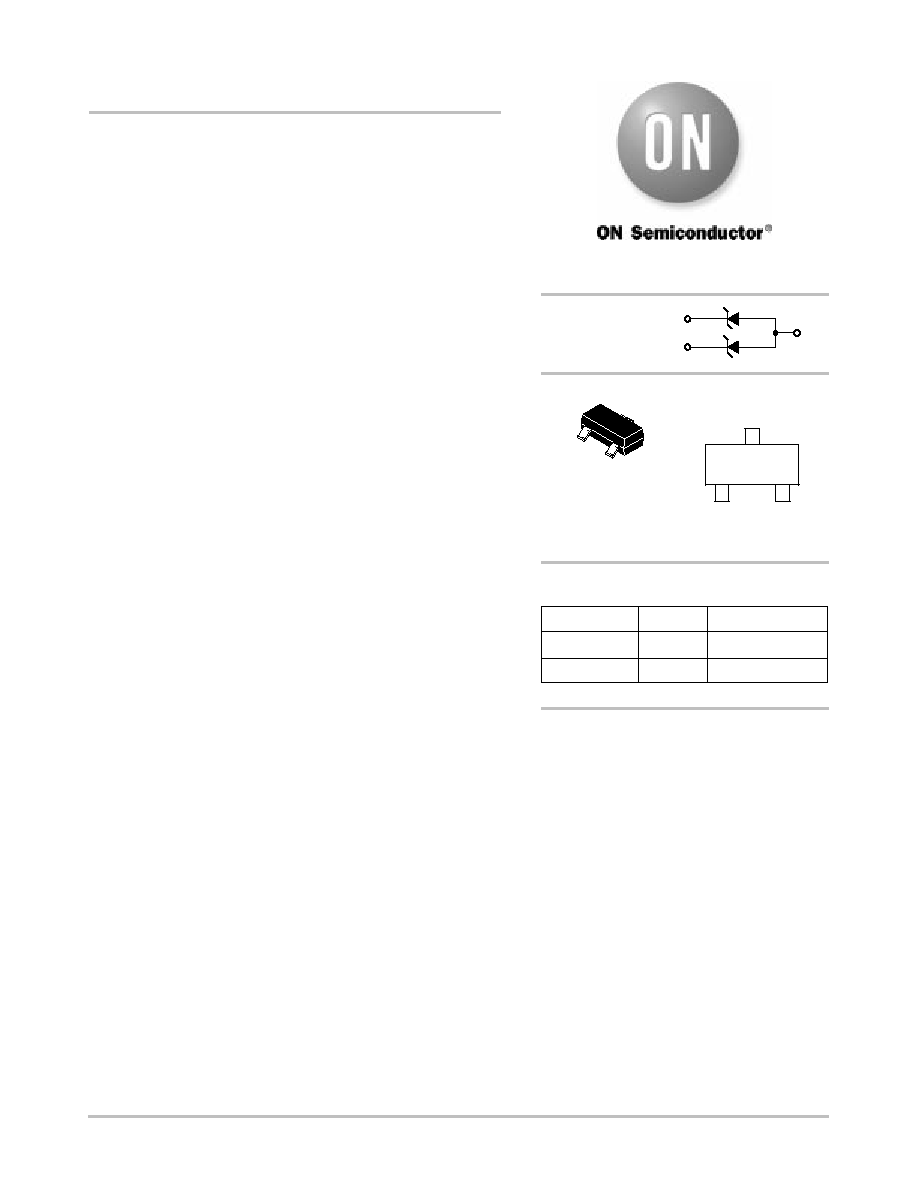
©
Semiconductor Components Industries, LLC, 2003
June, 2003 - Rev. 0
1
Publication Order Number:
SM05T1/D
SM05T1 Series
Preferred Device
Transient Voltage
Suppressor Diode Array
SOT-23 Dual Common Anode Zeners
for ESD Protection
These dual monolithic silicon zener diodes are designed for
applications requiring transient overvoltage protection capability. They
are intended for use in voltage and ESD sensitive equipment such as
computers, printers, business machines, communication systems,
medical equipment and other applications. Their dual junction common
anode design protects two separate lines using only one package. These
devices are ideal for situations where board space is at a premium.
Specification Features:
·
SOT-23 Package Allows Either Two Separate Unidirectional
Configurations or a Single Bidirectional Configuration
·
Working Peak Reverse Voltage Range - 5.0 V to 12 V
·
Peak Power - 300 Watt (8
X
20
ms)
·
Low Leakage
·
Flammability Rating UL 94 V-0
Mechanical Characteristics:
CASE:
Void-free, transfer-molded, thermosetting plastic case
FINISH:
Corrosion resistant finish, easily solderable
MAXIMUM CASE TEMPERATURE FOR SOLDERING PURPOSES:
260
°
C for 10 Seconds
Package designed for optimal automated board assembly
Small package size for high density applications
Available in 8 mm Tape and Reel
Use the Device Number to order the 7 inch/3,000 unit reel.
Replace the "T1" with "T3" in the Device Number to order the
13 inch/10,000 unit reel.
Preferred devices are recommended choices for future use
and best overall value.
SOT-23
CASE 318
STYLE 12
1
3
2
1
2
3
PIN 1. CATHODE
2. CATHODE
3. ANODE
Device
Package
Shipping
ORDERING INFORMATION
SM05T1
SOT-23
3000/Tape & Reel
5M
MARKING
DIAGRAM
5M
= Device Code
M
= Date Code
M
SM12T1
SOT-23
3000/Tape & Reel
http://onsemi.com
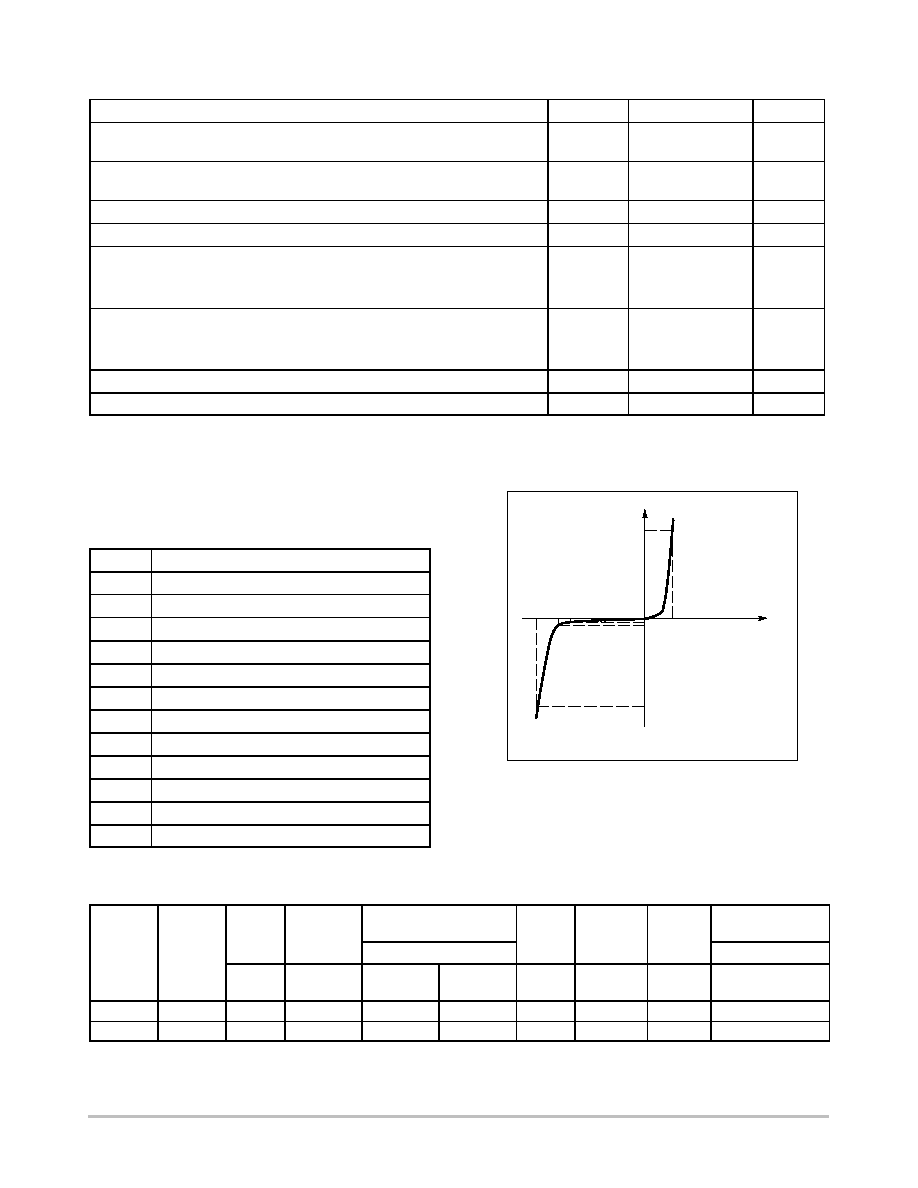
SM05T1 Series
http://onsemi.com
2
MAXIMUM RATINGS
Rating
Symbol
Value
Unit
Peak Power Dissipation @ 20
m
s (Note 1)
@ T
L
25
°
C
P
pk
300
Watts
IEC 61000-4-2 (ESD)
Air
Contact
±
15
±
8.0
kV
IEC 61000-4-4 (EFT)
40
A
IEC 61000-4-5 (Lightening)
12
A
Total Power Dissipation on FR-5 Board (Note 2) @ T
A
= 25
°
C
Derate above 25
°
C
°
P
D
°
225
1.8
°
mW
°
mW/
°
C
Thermal Resistance Junction to Ambient
R
JA
556
°
C/W
Total Power Dissipation on Alumina Substrate (Note 3) @ T
A
= 25
°
C
Derate above 25
°
C
°
P
D
°
300
2.4
°
mW
mW/
°
C
Thermal Resistance Junction to Ambient
R
JA
417
°
C/W
Junction and Storage Temperature Range
T
J
, T
stg
- 55 to +150
°
C
Lead Solder Temperature - Maximum (10 Second Duration)
T
L
260
°
C
1. Non-repetitive current pulse per Figure 3
2. FR-5 = 1.0 x 0.75 x 0.62 in.
3. Alumina = 0.4 x 0.3 x 0.024 in., 99.5% alumina
*Other voltages may be available upon request
ELECTRICAL CHARACTERISTICS
(T
A
= 25
°
C unless otherwise noted)
UNIDIRECTIONAL
(Circuit tied to Pins 1 and 3 or 2 and 3)
Symbol
Parameter
I
PP
Maximum Reverse Peak Pulse Current
V
C
Clamping Voltage @ I
PP
V
RWM
Working Peak Reverse Voltage
I
R
Maximum Reverse Leakage Current @ V
RWM
V
BR
Breakdown Voltage @ I
T
I
T
Test Current
Q
V
BR
Maximum Temperature Coefficient of V
BR
I
F
Forward Current
V
F
Forward Voltage @ I
F
Z
ZT
Maximum Zener Impedance @ I
ZT
I
ZK
Reverse Current
Z
ZK
Maximum Zener Impedance @ I
ZK
Uni-Directional TVS
I
PP
I
F
V
I
I
R
I
T
V
RWM
V
C
V
BR
V
F
ELECTRICAL CHARACTERISTICS
V
BR
, Breakdown Voltage
V
C
@
I
PP
=
Max I
PP
Typical
Capacitance
V
RWM
I
R
@ V
RWM
(Volts)
I
T
I
PP
=
1 Amp
Max I
PP
(Note 4)
(pF)
Device
Device
Marking
(Volts)
(
m
A)
Min
Max
mA
(Volts)
(Amps)
Pin 1 to 3
@ 0 Volts
SM05T1
5M
5
10
6.2
7.3
1.0
9.8
17
225
SM12T1
12M
12
1.0
13.3
15.75
1.0
19
12
95
4. 8
×
20
m
s pulse waveform per Figure 3
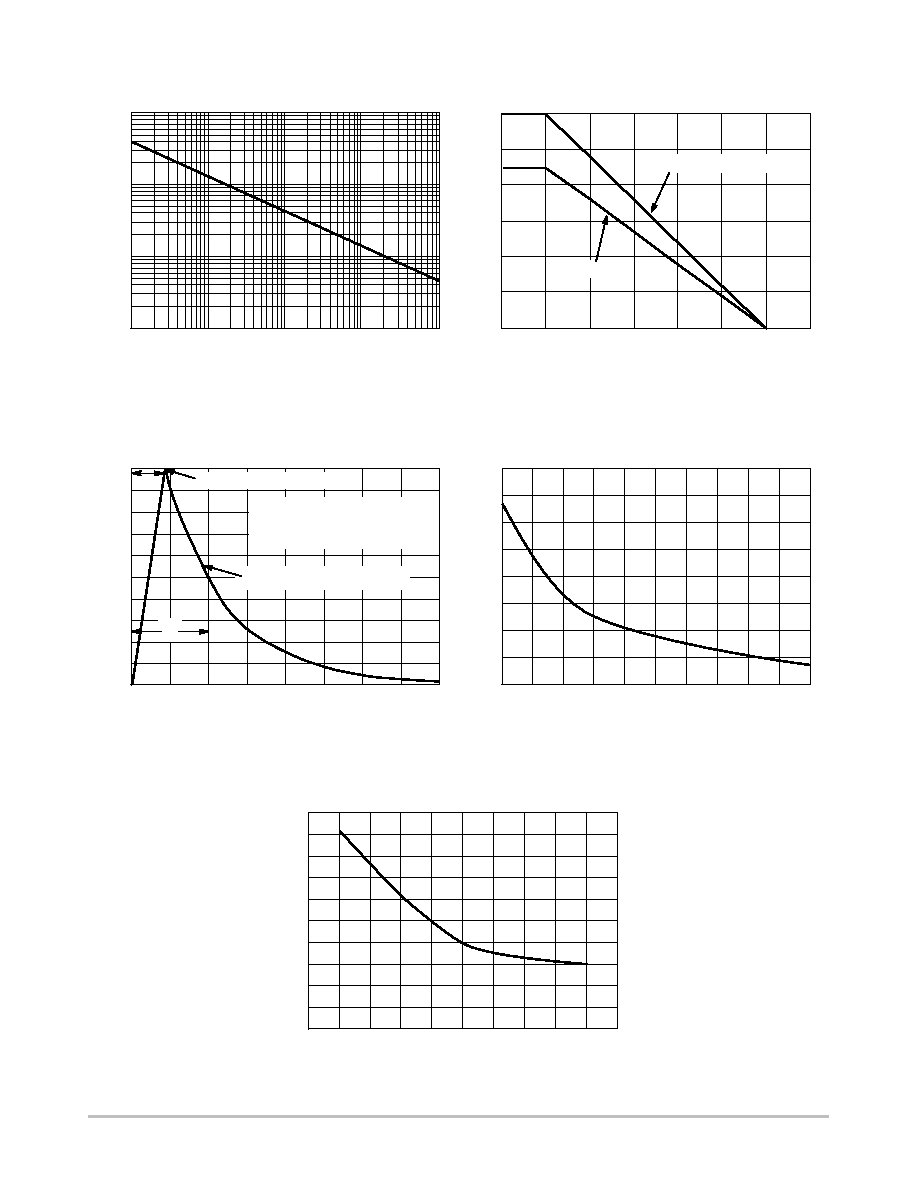
SM05T1 Series
http://onsemi.com
3
TYPICAL CHARACTERISTICS
0.1
10
10
Figure 1. Non-Repetitive Peak Pulse Power
versus Pulse Time
1
t
p
, PULSE DURATION (
m
s)
100
1000
1
0.1
0.01
Figure 2. Steady State Power Derating Curve
P
PP
, PEAK PULSE POWER (kW)
0
25
50
75
100
125
150
175
300
250
200
150
100
50
0
TEMPERATURE (
°
C)
FR-5 BOARD
ALUMINA SUBSTRATE
P
D
, POWER DISSIP
A
TION (mW)
100
Figure 3. 8
×
20
m
s Pulse Waveform
Figure 4. Typical Diode Capacitance (SM05)
0
1
5
2
4
250
130
90
BIAS VOLTAGE (VOLTS)
90
80
70
60
50
40
30
20
10
0
0
20
40
60
80
t, TIME (
m
s)
t
P
t
r
PULSE WIDTH (t
P
) IS DEFINED
AS THAT POINT WHERE THE
PEAK CURRENT DECAY = 8
m
s
HALF VALUE I
RSM
/2 @ 20
m
s
% OF PEAK PULSE CURRENT
PEAK VALUE I
RSM
@ 8
m
s
C, CAP
ACIT
ANCE (pF)
210
170
Figure 5. Typical Diode Capacitance (SM12)
0
1
5
8
12
100
90
40
30
20
10
0
BIAS VOLTAGE (VOLTS)
C, CAP
ACIT
ANCE (pF)
80
70
60
50
3
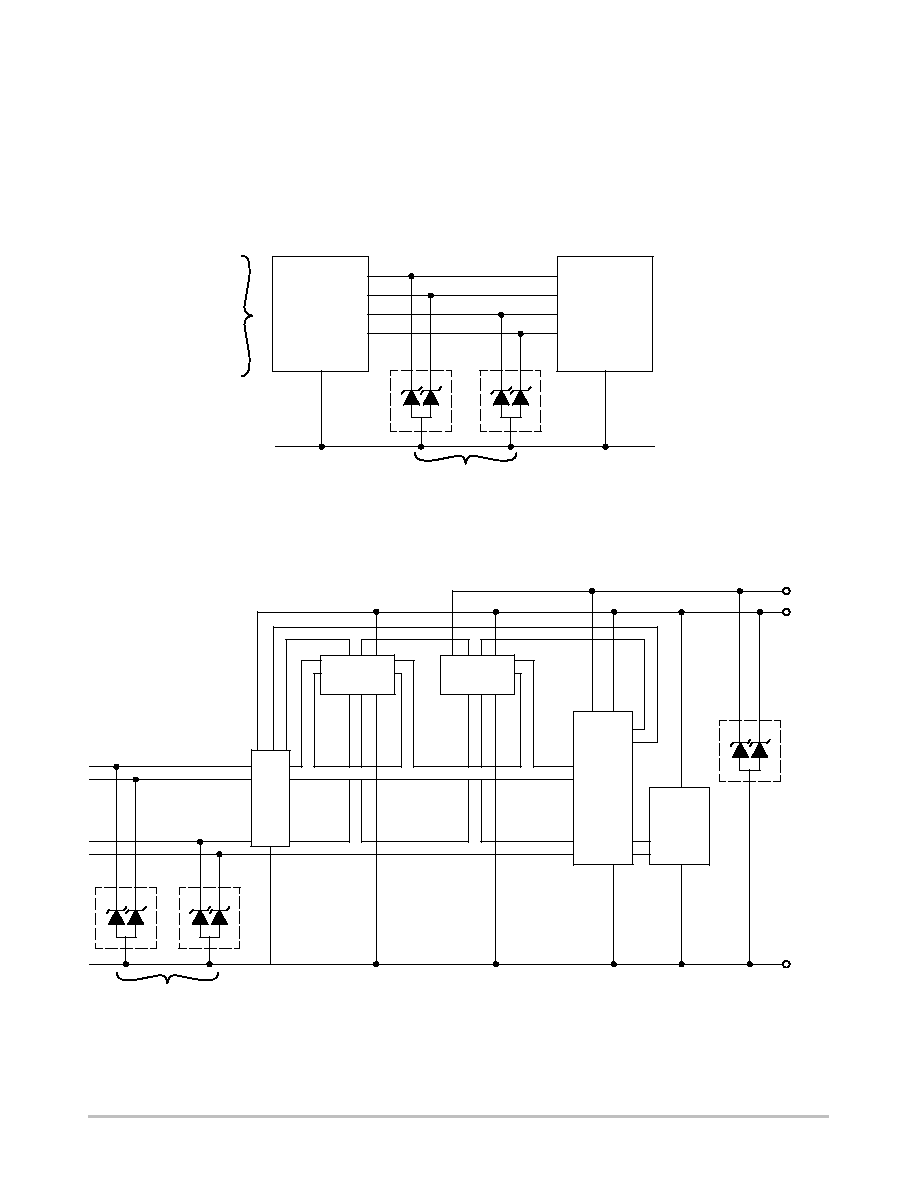
SM05T1 Series
http://onsemi.com
4
TYPICAL COMMON ANODE APPLICATIONS
A quad junction common anode design in a SOT-23
package protects four separate lines using only one package.
This adds flexibility and creativity to PCB design especially
when board space is at a premium. Two simplified examples
of TVS applications are illustrated below.
KEYBOARD
TERMINAL
PRINTER
ETC.
FUNCTIONAL
DECODER
I/O
A
SM05T1
Series
GND
Computer Interface Protection
B
C
D
Microprocessor Protection
I/O
RAM
ROM
CLOCK
CPU
CONTROL BUS
ADDRESS BUS
DATA BUS
GND
V
GG
V
DD
SM05T1
Series
SM05T1
Series
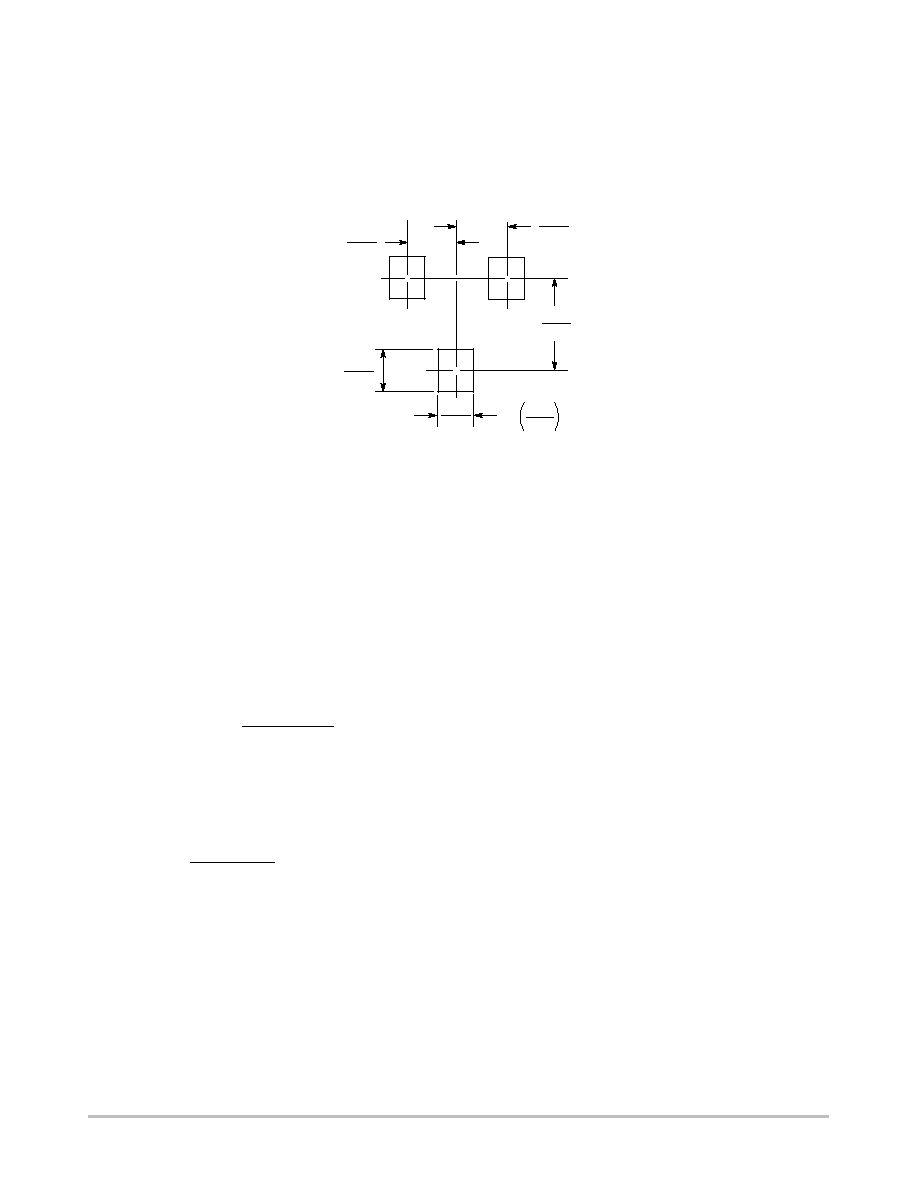
SM05T1 Series
http://onsemi.com
5
INFORMATION FOR USING THE SOT-23 SURFACE MOUNT PACKAGE
MINIMUM RECOMMENDED FOOTPRINT FOR SURFACE MOUNTED APPLICATIONS
Surface mount board layout is a critical portion of the
total design. The footprint for the semiconductor packages
must be the correct size to insure proper solder connection
interface between the board and the package. With the
correct pad geometry, the packages will self align when
subjected to a solder reflow process.
SOT-23
mm
inches
0.037
0.95
0.037
0.95
0.079
2.0
0.035
0.9
0.031
0.8
SOT-23 POWER DISSIPATION
The power dissipation of the SOT-23 is a function of the
drain pad size. This can vary from the minimum pad size
for soldering to a pad size given for maximum power
dissipation. Power dissipation for a surface mount device is
determined by T
J(max)
, the maximum rated junction
temperature of the die, R
JA
, the thermal resistance from
the device junction to ambient, and the operating
temperature, T
A
. Using the values provided on the data
sheet for the SOT-23 package, P
D
can be calculated as
follows:
P
D
=
T
J(max)
- T
A
R
JA
The values for the equation are found in the maximum
ratings table on the data sheet. Substituting these values
into the equation for an ambient temperature T
A
of 25
°
C,
one can calculate the power dissipation of the device which
in this case is 225 milliwatts.
P
D
= 150
°
C - 25
°
C = 225 milliwatts
556
°
C/W
The 556
°
C/W for the SOT-23 package assumes the use
of the recommended footprint on a glass epoxy printed
circuit board to achieve a power dissipation of 225
milliwatts. There are other alternatives to achieving higher
power dissipation from the SOT-23 package. Another
alternative would be to use a ceramic substrate or an
aluminum core board such as Thermal Clad
®
. Using a
board material such as Thermal Clad, an aluminum core
board, the power dissipation can be doubled using the same
footprint.
SOLDERING PRECAUTIONS
The melting temperature of solder is higher than the rated
temperature of the device. When the entire device is heated
to a high temperature, failure to complete soldering within
a short time could result in device failure. Therefore, the
following items should always be observed in order to
minimize the thermal stress to which the devices are
subjected.
·
Always preheat the device.
·
The delta temperature between the preheat and
soldering should be 100
°
C or less.*
·
When preheating and soldering, the temperature of the
leads and the case must not exceed the maximum
temperature ratings as shown on the data sheet. When
using infrared heating with the reflow soldering
method, the difference shall be a maximum of 10
°
C.
·
The soldering temperature and time shall not exceed
260
°
C for more than 10 seconds.
·
When shifting from preheating to soldering, the
maximum temperature gradient shall be 5
°
C or less.
·
After soldering has been completed, the device should
be allowed to cool naturally for at least three minutes.
Gradual cooling should be used as the use of forced
cooling will increase the temperature gradient and
result in latent failure due to mechanical stress.
·
Mechanical stress or shock should not be applied
during cooling.
* * Soldering a device without preheating can cause
excessive thermal shock and stress which can result in
damage to the device.




